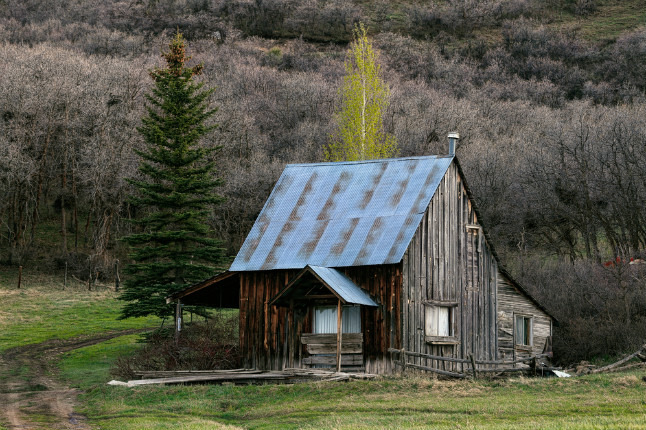Free Land, And How It Transformed The West
All across forests of the West, 10-by-12-foot cabins stand forlorn and forgotten, many with tumbledown roofs and gaping doors. Yet these modest homesteads represent a revolution in public-land policy: They were the culmination of an American dream born of Thomas Jefferson's belief that at our best, we would become a nation of independent farmers.
Last year marked the 150th anniversary of the fruit of Jefferson's conviction—the 1862 Homestead Act. The federal law changed the West forever by providing a new start for urban emigrants, immigrant families and single women.
Passed by Congress in 1862, during the Civil War, the Homestead Act celebrates one of the great settlement opportunities in world history. Only a young, brawny nation like the United States would be able, or willing, to give away free land.
Congress realized Jefferson's dream when it voted to provide 160 acres, a quarter section, of free land, for anyone willing to live on it for five years, plant crops and build a cabin 10 by 12 feet in size to "prove up" their claim. In the American West, 57 percent of homesteaders made good on their claims for 600,000 patents on 80 million acres of what had been public domain. The lure of free land drew American emigrants in covered wagons as well as European immigrants who crossed oceans and took railroads west.
Blake Bell, historian at the Homestead National Monument of America in Nebraska, notes that the Homestead Act "transformed the United States and the world as millions of lives were forever impacted by the government's distribution of free land."
A remarkable feature of this uniquely American law was its openness. The law did not require that homesteaders be American citizens, or even that homesteaders be men. Any adult could take up free land in the West, and dozens of single mothers tried their hand at homesteading.
The Homestead Act became wildly popular, and over the decades different versions of the law would be passed, such as the Timber Culture Act (1873), the Desert Land Act (1877), the Enlarged Homestead Act of 1909, a stock-grazer's law where ranchers could own the surface but the federal government kept the minerals, and even a special homestead law for World War I veterans. Between 1862 and 1934, when the Taylor Grazing Act greatly diminished homesteading, 4 million land grants averaging 160 acres were made in 30 states.
Of course, fraud flourished. Conniving ranchers sent their cowboys to homestead key springs and land along creeks. Tales are told of homesteaders swearing on the Bible that they had built a 10-by-12 cabin, without admitting that it was only 10-by-12 inches. Brothers sought adjoining claims and built one cabin straddling 320 acres instead of separate cabins on 160 acres.
Most of the homesteads have long since been incorporated into larger farms or ranches. So it was exciting to find a family that still owns its ancestors' original homestead of 160 acres, no more, no less. The land is located in the Wet Mountain Valley of Colorado, against the east side of the rugged Sangre de Cristo Mountains.
Named a Colorado Centennial Farm, it represents five generations of consecutive family ownership since Moritz and Matilde Brandenburg homesteaded the ground in 1880. Their land patent was signed by President Chester A. Arthur. Great-great-grandson John Brandenburg explained, "The ground here was like it was in Germany—loamy soil. It was tough times to homestead. My parents almost lost the place during the Depression in the 1930s, when you couldn't find a dollar."
But while thousands of homestead families sold their claims and moved away, the Brandenburgs hung on. Now the land is under a conservation easement held by the San Isabel Land Protection Trust, which safeguards sweeping views of the Sangre de Cristo Range, white now with the first snows. Brandenburg and his son, Ken, hope to keep their property in the family. As Ken says, "It's our refuge."
I grew up on a former homestead of 160 acres in southeast Colorado, attending high school on the High Plains, the short-grass prairie of songbirds, raptors, jackrabbits and grama grass. It was a place of vastness where I had a view as far as the eye could see.
The homesteading legacy that peopled the West endures. Though forlorn cabins, roofless against winter winds, stand empty today, those simple structures represent success for families starting fresh, thanks to the key law that settled the West.
–
This essay first appeared in High Country News.
